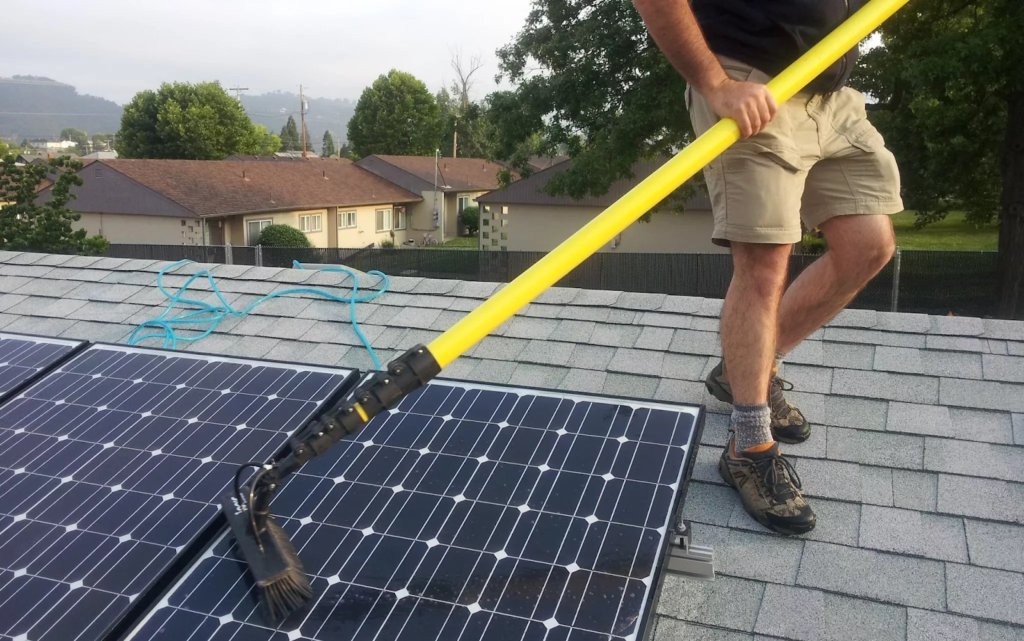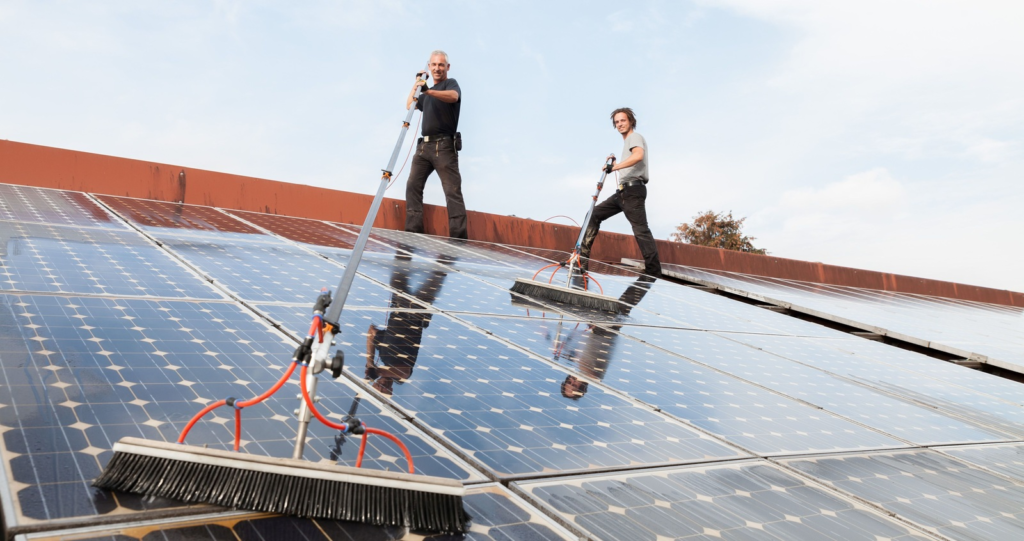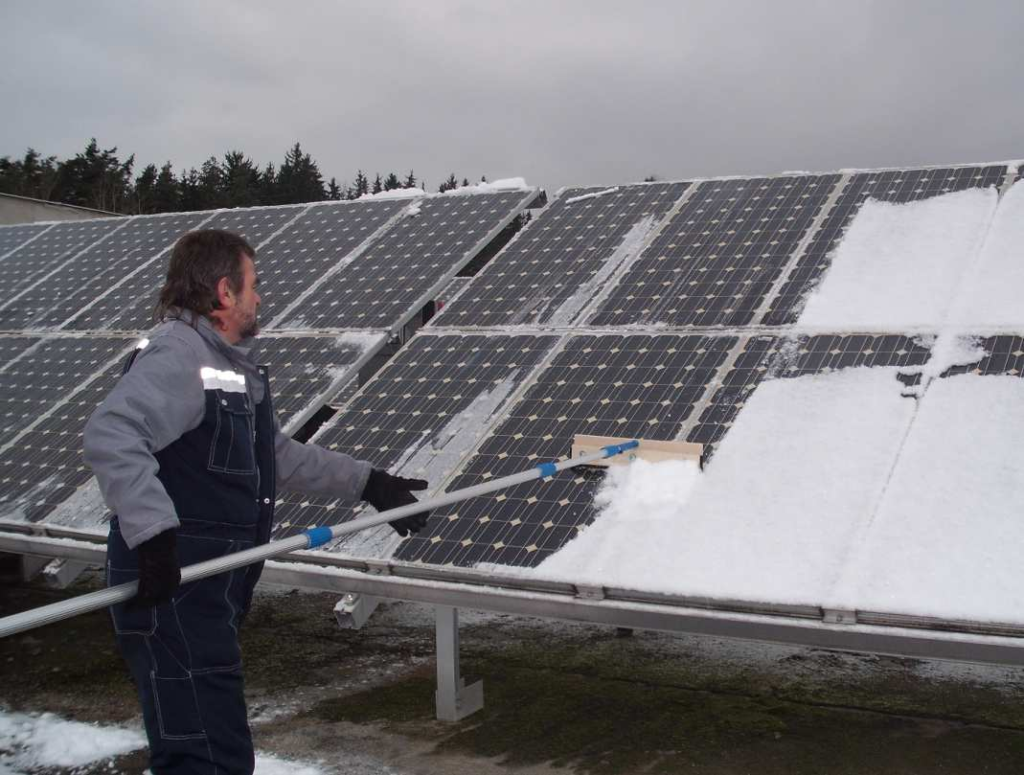Solar panels and auxiliary structures of solar power plants are known for their reliability, mechanical strength and resistance to adverse weather conditions. However, certain maintenance and care procedures are necessary. Performing a series of simple tasks on a regular basis will not only ensure maximum performance of your station, but also extend its life.

What to Check Regularly
Each of the elements of SES of any type requires periodic inspection. This guarantees timely detection of problems and their prompt elimination. We list the basic rules for checking a photovoltaic system element by element.
1. Fasteners. From time to time, it is necessary to check the fastening structures for mechanical damage to the posts, loose bolts or signs of corrosion. Such checks should be especially carefully carried out during prolonged rains, snowfalls or after strong storms and winds.
2. Inverters. When deployed outdoors, these critical components of a solar array system are securely protected by special high-strength enclosures. It is almost impossible to break their integrity, but the filters require frequent cleaning. Long-term absence of this procedure leads to constant overheating of the inverter, which eventually ends in a breakdown of the device.
3. Solar modules. The hermetic design of the module and the high strength of the protective tempered glass minimizes the likelihood of mechanical damage to the working surfaces. Features of installation at an angle to the horizon and a low level of adhesion in most cases provide self-cleaning of modules in a natural way. But sometimes structural advantages are not enough, and it is necessary to remove stuck branches and debris from the panels, wash off dirt or sand. The appropriate tools and cleaning agents must be used for this.
4. Grounding. To maintain its performance, it is necessary to periodically inspect the contacts and the integrity of the insulation. The lack of a working output to the ground leads to a drop in productivity, stagnation of solar power plants, and in the worst cases, to a complete failure of photovoltaics.
5. Cable insulation. Electrical insulation protects metal contact wires from moisture. Even a slight damage to it can cause a short circuit, which will require a long and extremely costly repair. Therefore, a careful check of the integrity of the insulation is required.
6. Landscape changes. If the SPP installation was carried out in late autumn, winter or early spring, it could not take into account the partial shading of photovoltaic cells by the foliage of nearby trees or large shrubs. If such a problem is found, the obstacle that has arisen should be immediately eliminated by cutting off the corresponding branches.
The nuances of servicing solar panels in the summer
The surfaces of the panels are subjected to periodic cleaning in case of heavy contamination. If this is not done, the performance of the solar power plant is reduced by 3-15%, depending on the degree of blocking the access of sunlight to photovoltaic cells.

Cleaning of modules at high altitudes and steep roof slopes is usually carried out:
- representatives of specialized cleaning companies under a one-time contract;
- specialists of the service center of the company with which the contract for warranty and post-warranty maintenance was concluded.
In the presence of appropriate cleaning products, tools and safety equipment, it is also possible to independently perform such work. However, it should be remembered that the lack of professional skills in working at heights can lead to unpredictable and dangerous consequences for health.
When cleaning the modules yourself, the following rules must be observed.
- Work only on a completely dry roof, wearing shoes with non-slip soles and using a safety cable securely attached to a solid stationary structure.
- It is preferable to choose a clear and sunny day for service.
- For washing, it is better to use a regular garden hose, and for cleaning – a brush with soft bristles on a long stick.
- If the pollution is severe, you can add detergents without strong chemicals to the water – baby laundry detergent, ordinary soap, dishwashing detergent, etc.
- Start cleaning with large debris. If possible, remove hooked branches with your hands to prevent even minor scratches on the protective solar glass.
- The best cleaning tool is a special disc brush with nylon bristles that can rotate under the pressure of water. When mounted on a telescopic rod, you can easily and efficiently clean both batteries on the roof and on high supports.
- If the water in your area contains an excess of calcium, you should add a hardness softener to the water.
- At the end of the summer season and preparing the panels for the winter, it is recommended to treat the working surfaces with a special aerosol agent for car windows. The active substances contained in it prevent fogging, the formation of grease stains and limescale.
The nuances of maintaining solar panels in winter
If in summer the main problem for the panels is dust and dirt, then in winter it is replaced by snowfalls and sudden temperature changes that can form a layer of ice on the surface of the batteries. There are three approaches to cleaning photovoltaics in winter.

Passive Method
It consists in providing a complex of solar panels with the opportunity to clear snow in a natural way. Rationale:
- a sufficiently large angle of inclination (in winter – up to 70 degrees);
- almost perfectly smooth surface;
- battery heating during operation.
The combination of these three factors will lead to the flooding of the lower layer of snow, and it will slide down without human intervention.
Active manual method
It involves the use of improvised means – special tools, warm water and / or a stream of warm air. Since such cleaning is performed manually, its cost is minimal, and the effect is optimal.
Active automatic method
It requires certain costs, but for a significant number of panels it is the most effective and reliable, since it excludes the human factor from the process. It is carried out using one of three technologies.
- On the surface of the panels, along the “grooves” separating the rows of cells, a heating electric cable is fixed (about 5 meters long per square meter). Even with heavy icing or sticking of a thick layer of wet snow, it is enough to turn on the current for a few minutes to completely clean the batteries.
- An automatic heating system that uses a similar cabling scheme, but determines if it needs to be started on its own.
- The original form of air intakes, working on the so-called physical principle of Venteri. They were first used by Canadian engineers. By creating a 10-12-fold increase in air pressure at the narrow end of the structure, the air flow blows away any layer of snow from the panels. An additional advantage of the method is the complete absence of energy consumption for its operation. The disadvantage is inefficiency in absolutely calm weather.
All proposed methods require minimal time and extremely low (in most cases) financial costs.
Remember! By conducting timely inspection and cleaning of the solar power plant, you support its long-term, stable operation and get maximum productivity and income.